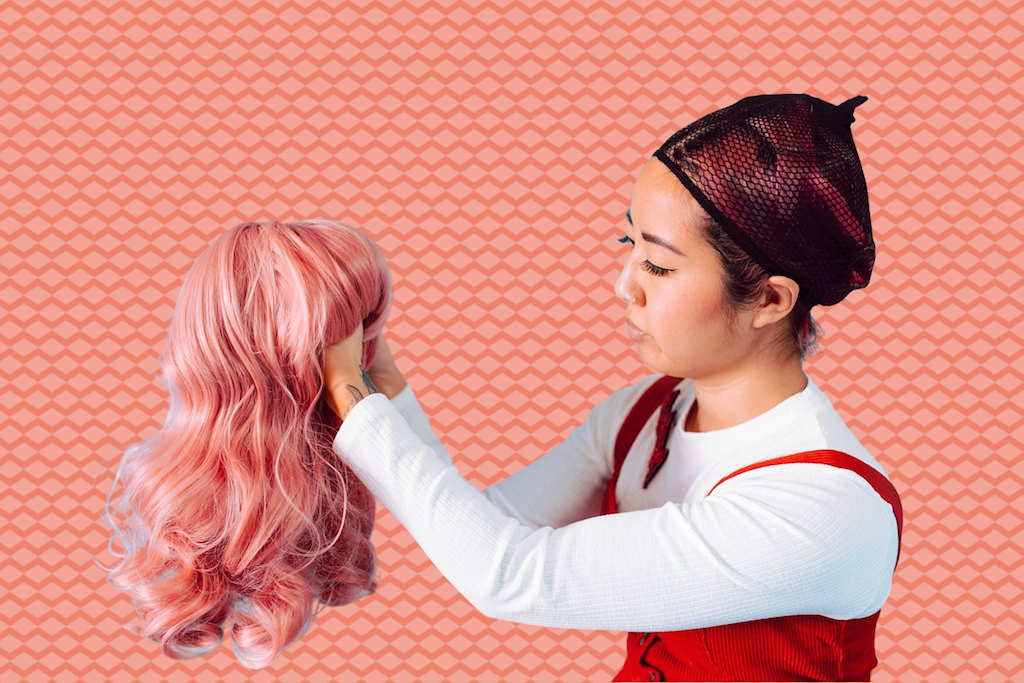Wigs and toupees have been worn across cultures since ancient times, giving the wearer the versatility to change hairstyle to suit their mood, outfit or needs, all without damaging their hair or having to make more permanent changes.
Not only that, but wigs can also help provide a boost in self-confidence to those living with Alopecia disease, experiencing baldness or having undergone medical treatment that has resulted in hair loss.
As the Guardian reported back in 2019, more overt, outlandish wigs have become increasingly visible on the catwalk and in high fashion in recent years, and this is reflected in their increased popularity on the high street, too. In fact, the global wig, toupee and hair extension market is predicted to grow hugely in the coming years, reaching nearly £8 billion in value by 2023.
All of this means that as demand has risen, so has the price. Indeed, buying a wig isn’t exactly cheap, especially if you’re invested in a few pieces in order to breathe versatility into your wardrobe. To ensure you’re getting longevity from your purchase, check out these hair care tips on how to make your wig last longer.
Firstly, Invest In Quality
First up; you’ll need to start by investing in a good quality wig. There are several brands out there that claim that their products are the best on the market, but some scrutiny is required in finding one that truly lives up to that claim.
Good quality wigs can be expensive, but this will also mean that they will last longer, providing you take care of them appropriately. To identify if a wig is of good quality, the hair must appear (and ideally be) natural and genuine. The option to wash and heat the hair should also be available, indicating the wig is durable enough to withstand such treatment.
Of course, if you’re carrying out quality control checks remotely (online), then you’ll have to scrutinise reviews instead, rather than carrying out a first hand (first hair?) appraisal.
Wigs and toupees made from real human hair have several advantages over synthetic versions. Firstly, the latter often appears very shiny and doesn’t blend well with the wearer’s natural hair. Secondly, the synthetic version often degrades quickly. Human hair wigs, whilst certainly more expensive, can be re-styled and coloured, and with the proper care, do tend to last longer.

Don’t Wear The Same Wig Everyday
That said, if you’re looking for daily changes in style, a set of pre-styled synthetic wigs might be more convenient.
Generally speaking, it’s recommended that you do not wear the same wig every day, especially if it’s human hair. You may get away with it if your wig is synthetic but a human hair wig will require regular washing. Wearing the same wig every day will expose it to more damage and you may notice that the colour starts to fade, just as it would if it was your genuine hair, dyed. Once again, if you choose to wear wigs on a daily basis, it may be worth investing in more than one wig so you can rotate them.
Wash Your Wigs Diligently
A key thing to learn for proper wig and toupee maintenance is how to wash it. Experts recommend that when it is time to wash your wig, you do so thoroughly but gently. Pay attention to the temperature of the water, as this should not be too hot or too cold as it could damage the strands, whether they are human hair or synthetic.
To maintain a men’s toupee or a female wig, you may be tempted to wash it after each use or several times a week, as you may do with natural hair, but this is not recommended. Overwashing the wig can damage the quality. Ideally, it’s recommended that you do so after ten or so wears in order to preserve its quality.
Keep Your Wig Moisturised
Keeping natural hair moisturised is a must, right? Perhaps surprisingly, wigs require the same treatment, and maybe even more.
Our scalps naturally produce sebum that helps keep our locks healthy and full of moisture. This isn’t replicated in wigs, meaning that all the moisture required needs to come via a helping hand. Applying oil to your wig is a good way to achieve the level of hydration needed to keep it looking healthy. The oil you use may depend on the type of wig you have and whether it is human hair or synthetic, with the best oil for human hair wigs made from natural ingredients; coconut and avocado oil are particularly good.

Invest In Quality Hair Products
Buying a wig may be costly and, unfortunately, maintaining it won’t be cheap either. If you want it to look healthy and last longer, you must invest in good quality hair products specifically designed for wigs. Aside from that oil we just mentioned, you might want to consider finishing sprays, styling creams, treatment mists, restoring balms and softening conditioners, especially.
Avoid Heating Tools
As we’re sure you know, heating tools can cause great damage to natural hair. The same goes for wigs.
Understandably, you may want to style your hair on a daily basis so that you look your best but it would be ideal if you learned how to do this without using heating tools as these can damage your wig severely. If you must use them, don’t do it frequently and avoid using them on the lowest heating setting. You should also deploy appropriate heat protectors.
After washing your wig, let it air dry instead of using a blow dryer. These will be the ideal combination for you to ensure the quality of your wig is maintained.
Read: 8 essential tips for maintaining strong, healthy hair
Store Your Wigs Properly
Storing your wig (when it’s not on your head; duh) is something that many underestimate in terms of importance, but it remains a crucial element of maintaining your wig appropriately and extending its life.
Get an appropriate wig headstand so that you can place your wig out of harm’s way when you’re not wearing it. They should ideally be kept away from heat and humidity, as well as out of natural sunlight. Alternatively, you can put the wig back in its original box after you’ve washed it and combed it properly, ensuring that it’s properly dry before doing so.

Trim It Occasionally
You’ve probably realised that wigs require pretty similar treatment to normal hair by now, and this also applies to having them cut. Indeed, your wig will also need to be trimmed occasionally. However, unlike natural hair, it will not grow back, so this needs to be done properly (and often, that means professionally).
This does not necessarily mean just any hairdresser – there are professionals out there who are experts in maintaining wigs to ensure they look as natural as possible. Not only will they be able to trim any ends and bristle hairs, but they can also wash your wig and advise you on how to maintain it appropriately. This may be costly but there is no better way to ensure your wig is being taken care of.
The Bottom Line
Just like natural hair, wigs require a surprising amount of maintenance and upkeep to ensure both their longevity and the fact that they’re looking as glossy and voluminous as possible!





